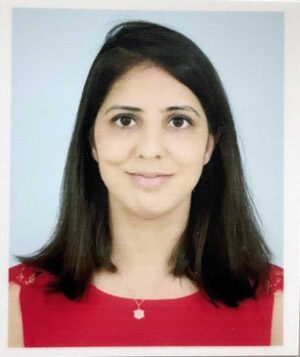The accelerating pace of electrification via renewable energy sources is shifting focus towards decarbonization and distributed generation with the potential to combat increasing environmental crisis and to promote sustainable development. Renewable technologies have the potential to fulfil the electricity demand locally which eliminates the unwanted conversion stages, promoting DC microgrid concept, ultimately lowering the energy costs and easy energy access.
Alternative energy sources such as solar photovoltaic (PV) and fuel cell along with energy storage systems are promising for DC microgrid applications. However, the effective integration of these alternative energy sources still remains a challenge due to their low voltage output, unregulated and intermittent characteristics issuing a requirement of a dedicated power conditioning unit. To
revolutionize the way these alternative sources are interfaced with a high voltage DC microgrid or to the conventional ac grid, dc/dc converters are expected to be power-dense, compact and extremely efficient.
To achieve these objectives, the most prevalent ways are to use fewer conversion stages, and increase the converter’s switching frequency leading to reduced footprint with smaller inductors and output capacitors. However, higher switching frequency causes additional switching losses that deteriorates the efficiency and thermal performance. Maintaining soft switching of the semiconductor devices for the entire range of operation is one of the key requirements to enable efficient operation at high switching frequencies. This thesis focuses on developing simple soft-switching techniques to improve the overall performance of the high frequency DC/DC converter for wide operating range of load current and source voltage.
The current-fed converters are justified to be more plausible choice for the low voltage high current applications requiring high voltage gain over existing voltage-fed converters. However, a large voltage overshoot across the semiconductor devices at their turn-off is the major setback that diminishes the merits of current-fed circuits. Several voltage-clamping circuits, through dissipative snubbers, active clamp circuits, and auxiliary circuits etc. are reported in the literature. However, these methods increase the component’s count, design and control complexity, cost and volume, which in turn downgrades the performance of the converter. Alternatively, to resolve the voltage spike issue with improved performance, a gamut of soft-switching current-fed converters utilizing secondary modulation, resonant and quasi-resonant features are also reported in the literature. However, the drawbacks outweigh the benefits offered by these converters.
Accomplishing the above mentioned objectives together with distinct merits offered by current-fed circuits, this research aims to exploit the quasi-resonance concept for achieving soft-switching and smooth commutation of the semiconductor switching devices. The proposed quasi resonant approach that utilizes the leakage inductance of transformer and a high frequency series resonant capacitor for a short period also termed as ‘resonant-pulse’, has been investigated in various current-fed converter topologies. Proposed converter class emphasize on simple and efficient design, without the use of additional snubber circuits and eliminates device turn-off voltage spike, which is a historical problem with traditional current-fed converters.
The novel features of the proposed commutation technique can be summarized as:
1. Short-duration resonance (resonance-pulse) is implemented to realize ZCS turn-off.
2. Resonant circuit utilizes transformer leakage inductance and additional small HF capacitor for resonance operation.
3. Series connected resonant capacitor provides load-adaptive resonant energy as opposed to fixed resonant energy in parallel resonance.
4. Low circulating energy at light-loads due to load adaptive resonant energy. Therefore, low power loss is observed.
5. ZCS operation and natural device voltage clamping for wide variations in source voltage and load current.
6. Switching frequency variation is less sensitive to the source voltage variation than load variation.
7. Low component count and simple configuration.
8. Negligible duty-cycle loss.
9. Modularity of this converter allows easy scalability for high power and voltage levels.
The proposed research involves converter operation, control and performance for low voltage high current applications. The converter configuration demonstrates good efficiency and compact structure with only few switching devices and simpler gate control requirement. The proposed converter also demonstrates wide ZCS operation, reduced filtering requirement, lower component count, making it suitable for solar/fuel cell integration to DC microgrid. The converter can serve as a promising interface in applications like battery charging, fuel-cell inverter, solar inverter, solar water pumping etc.
About the Presenter:
Swati Tandon received her master’s degree in power systems from the Delhi Technological University (formerly Delhi College of Engineering), Delhi, India in 2013. She received her Ph.D. degree in Power Electronics from Concordia University, Montreal, QC, Canada in 2021. Her primary research interests include soft-switching techniques, quasi-resonant converters, development of high frequency resonant based current-fed DC-DC converter topologies for microgrid or distributed energy systems.
Currently, she is working as a Senior power electronics engineer with Schneider Electric Solar Inc. Vancouver, Canada. From 2021 to April 2023, she worked as a power electronics engineer with R&D team in Veolia Water Technologies & Solutions, Montreal Canada. Her role involves PFC converter design and control for purification and disinfection applications. From 2013 to 2017, she has worked with Electrical & Automation Division, Larsen & Toubro limited, Mumbai, India, as an Assistant Manager in their Switchgear Design and development center.



